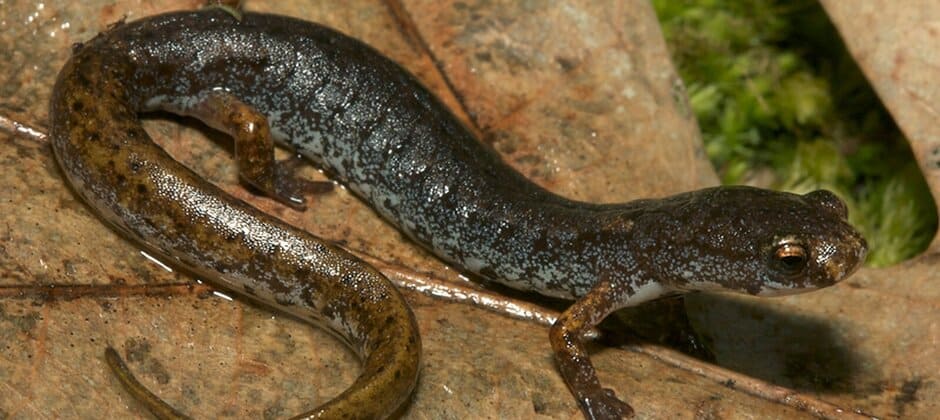Share this article
TWS2021: eDNA techniques detect ranavirus
Environmental DNA techniques can detect a deadly virus in amphibian ponds, giving wildlife managers critical information about how to best protect vulnerable amphibian species.
Ranavirus is deadly to amphibians. “It’s associated in die-offs in a really wide range of ectothermic vertebrates and can decimate populations of larval amphibians in the fishless breeding pools that really act as a nursery for the larval life stage of many amphibian species,” said Alyssa Kaganer from Cornell University in a presentation on her research at The Wildlife Society’s virtual 2021 Annual Conference.
Ranavirus is found throughout the range of four-toed salamanders, which are listed as threated, endangered or a species of conservation need in a number of different states and provinces across North America.
“These are small, lungless salamanders with a very broad range across the United States and Canada,” Kaganer said.
She and her colleagues wanted to see if detecting eDNA, or trace amounts of DNA shed by organisms in water, soil or other materials, could track hot spots where ranavirus might be affecting four-toed salamanders (Hemidactylium scutatum) in New York state.
They took water samples from 10 vernal pools (ponds that only hold water during wetter seasons) where they thought there might be four-toed salamanders. They sampled ponds weekly, for eight weeks, in areas they would have expected to find salamander larvae.
They then designed a new method to specifically isolate and identify DNA from four-toed salamanders—one that wouldn’t give false positives on related amphibian species.
The researchers only found that two of the 10 ponds they analyzed tested positive for four-toed salamander DNA, despite many of the ponds having contemporary associations with the species.
“This suggests to us that these methods are not sufficiently sensitive to detect adult animals that are broadly distributed on the landscape around vernal pools,” Kaganer said.
“We recommend that future surveillance efforts prioritize increased quantity and volume of sample collection per site visit and include repeat surveys of candidate sites,” the researchers continued in their abstract.
Nine out of 10 of the pools tested positive for ranavirus, indicating the disease is broadly distributed in vernal pools in New York state. The researchers believe that eDNA techniques will be useful for tracking the spread of the disease with further refinement.
“Further work to characterize ranavirus eDNA transport, temporal trends, relationship to infectious virions, and decay is needed before this tool can reach its full potential,” the authors said.
Header Image: Four-toed salamanders are of conservation concern in a number of states and provinces in the U.S. and Canada. Credit: Todd Pierson








